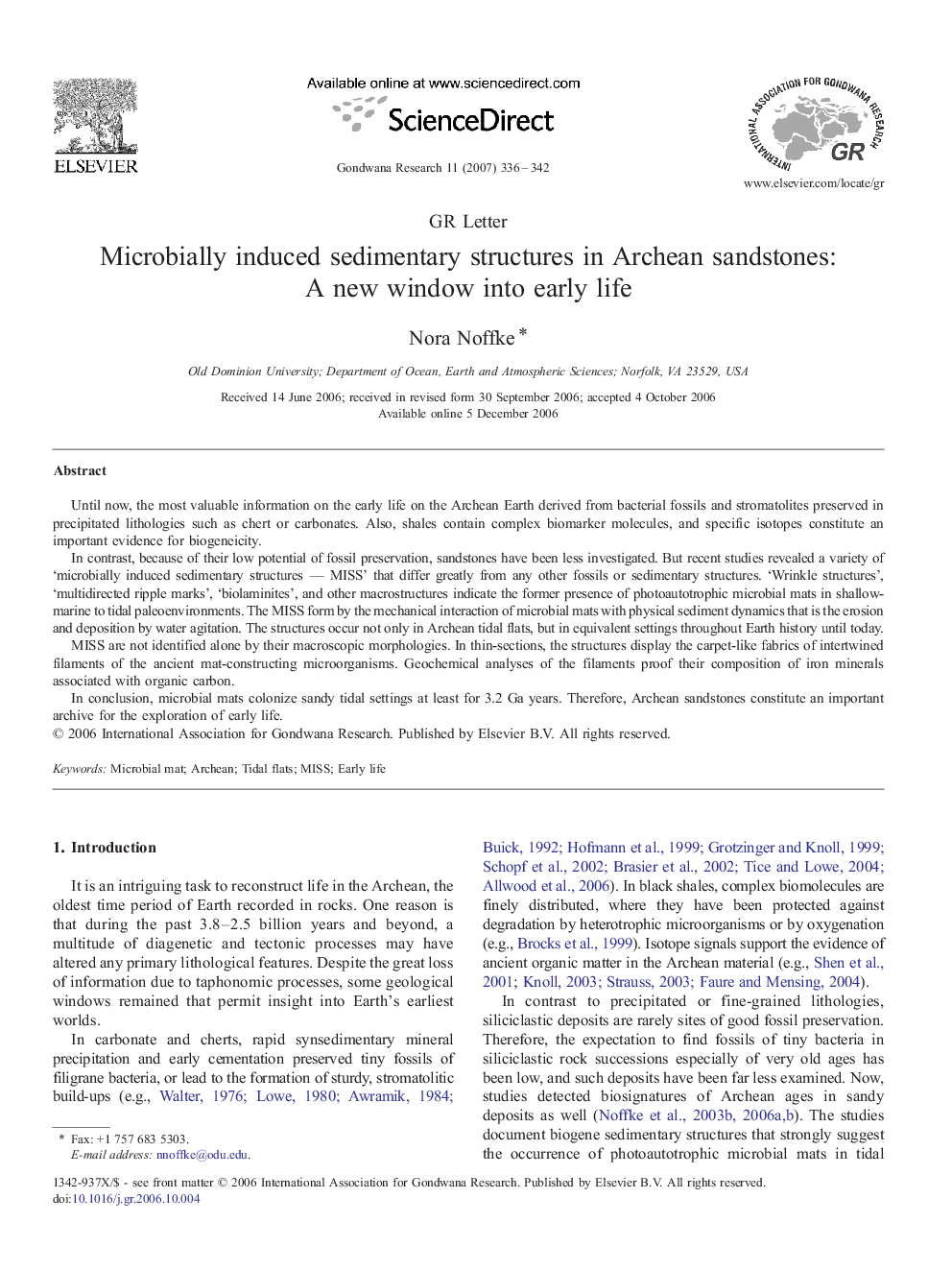| Article ID | Journal | Published Year | Pages | File Type |
|---|---|---|---|---|
| 4727648 | Gondwana Research | 2007 | 7 Pages |
Until now, the most valuable information on the early life on the Archean Earth derived from bacterial fossils and stromatolites preserved in precipitated lithologies such as chert or carbonates. Also, shales contain complex biomarker molecules, and specific isotopes constitute an important evidence for biogeneicity.In contrast, because of their low potential of fossil preservation, sandstones have been less investigated. But recent studies revealed a variety of ‘microbially induced sedimentary structures — MISS’ that differ greatly from any other fossils or sedimentary structures. ‘Wrinkle structures’, ‘multidirected ripple marks’, ‘biolaminites’, and other macrostructures indicate the former presence of photoautotrophic microbial mats in shallow-marine to tidal paleoenvironments. The MISS form by the mechanical interaction of microbial mats with physical sediment dynamics that is the erosion and deposition by water agitation. The structures occur not only in Archean tidal flats, but in equivalent settings throughout Earth history until today.MISS are not identified alone by their macroscopic morphologies. In thin-sections, the structures display the carpet-like fabrics of intertwined filaments of the ancient mat-constructing microorganisms. Geochemical analyses of the filaments proof their composition of iron minerals associated with organic carbon.In conclusion, microbial mats colonize sandy tidal settings at least for 3.2 Ga years. Therefore, Archean sandstones constitute an important archive for the exploration of early life.
